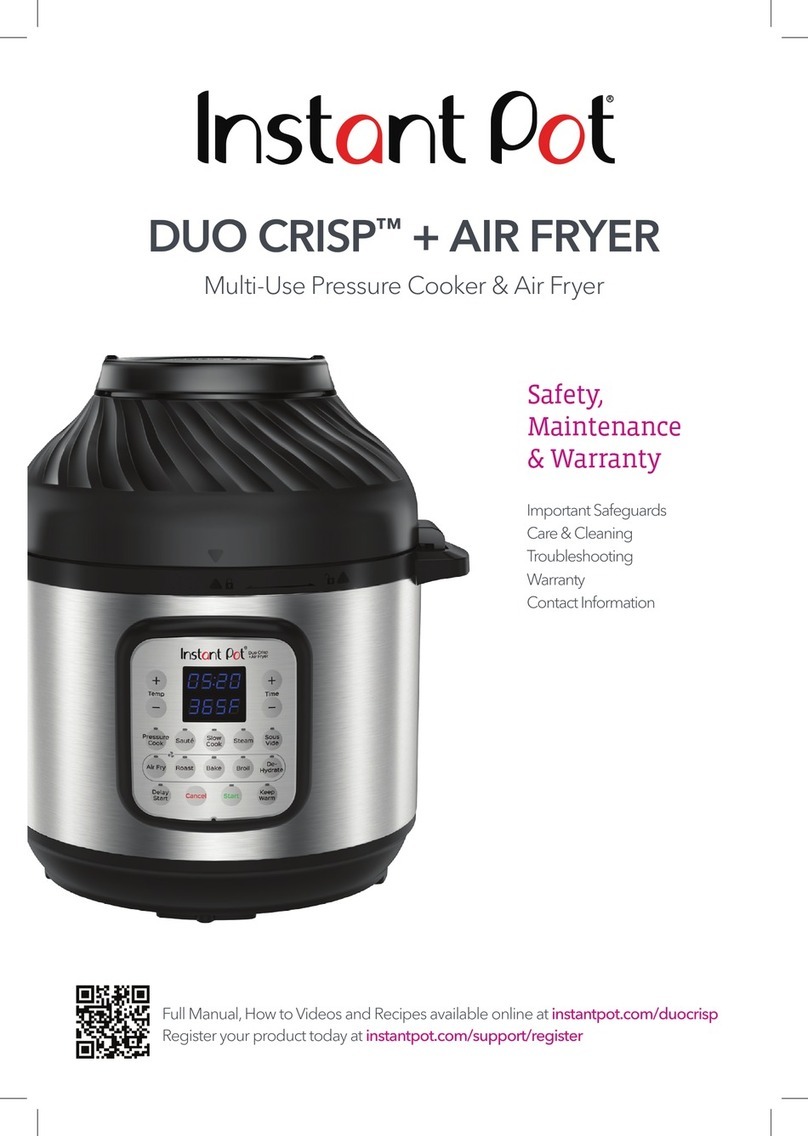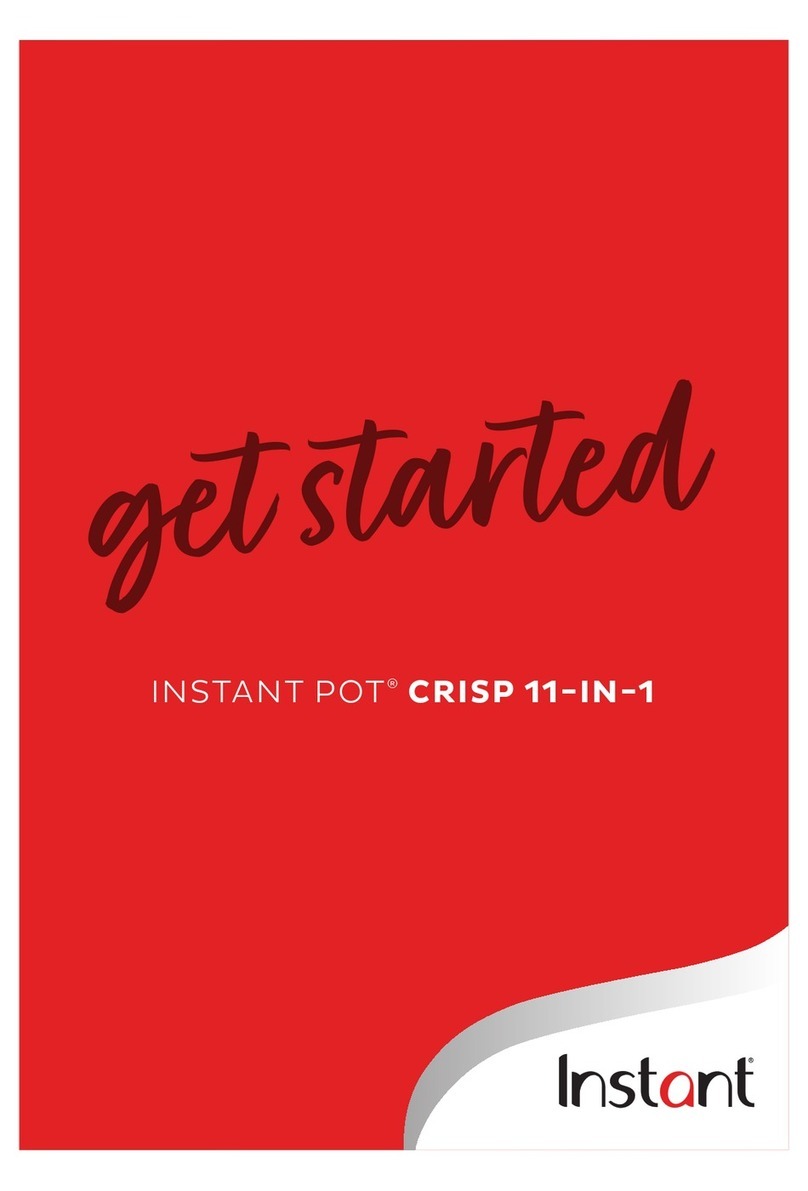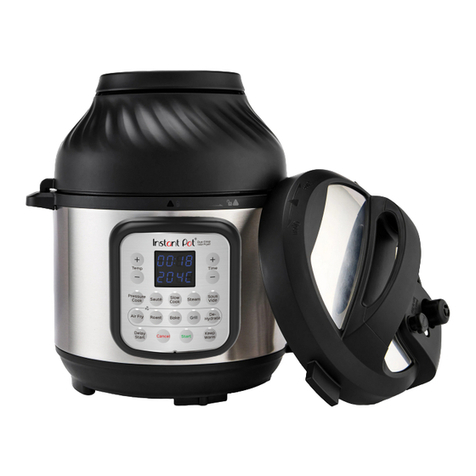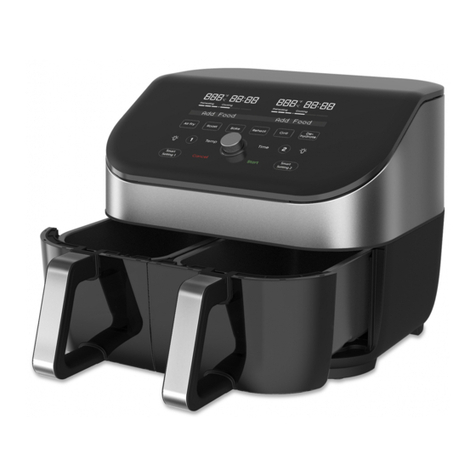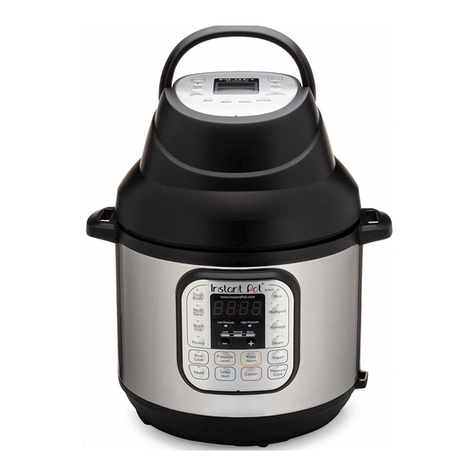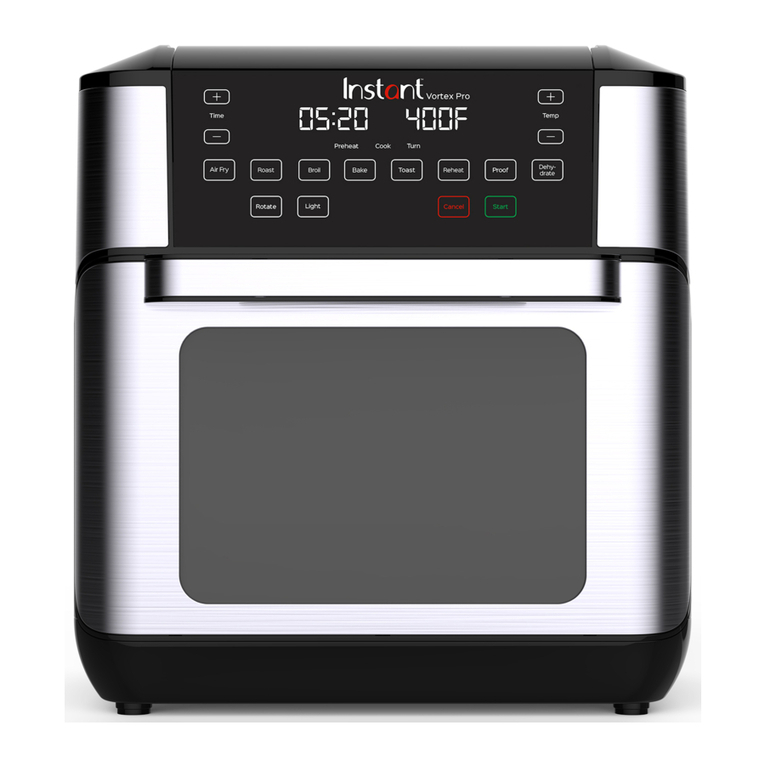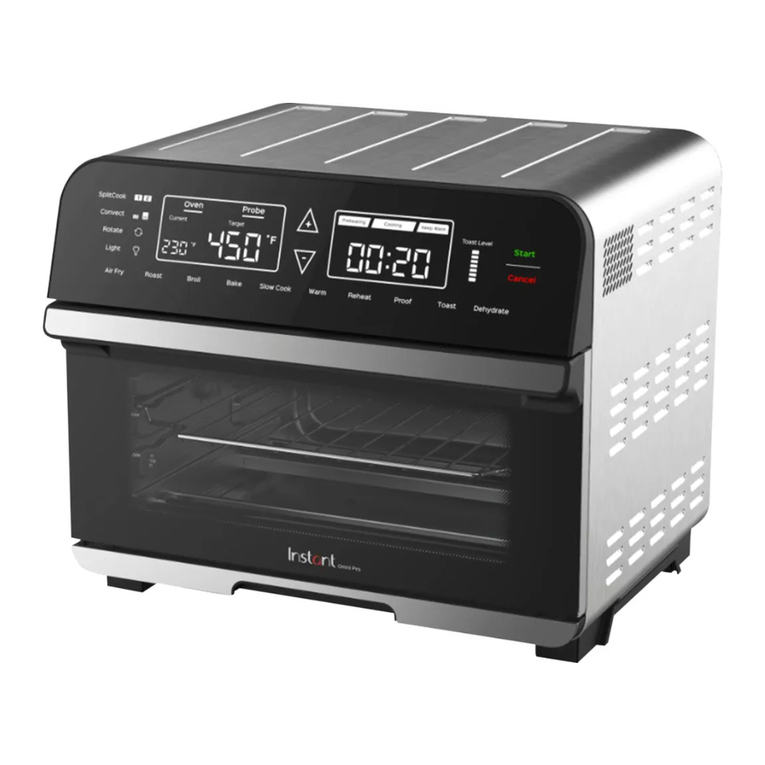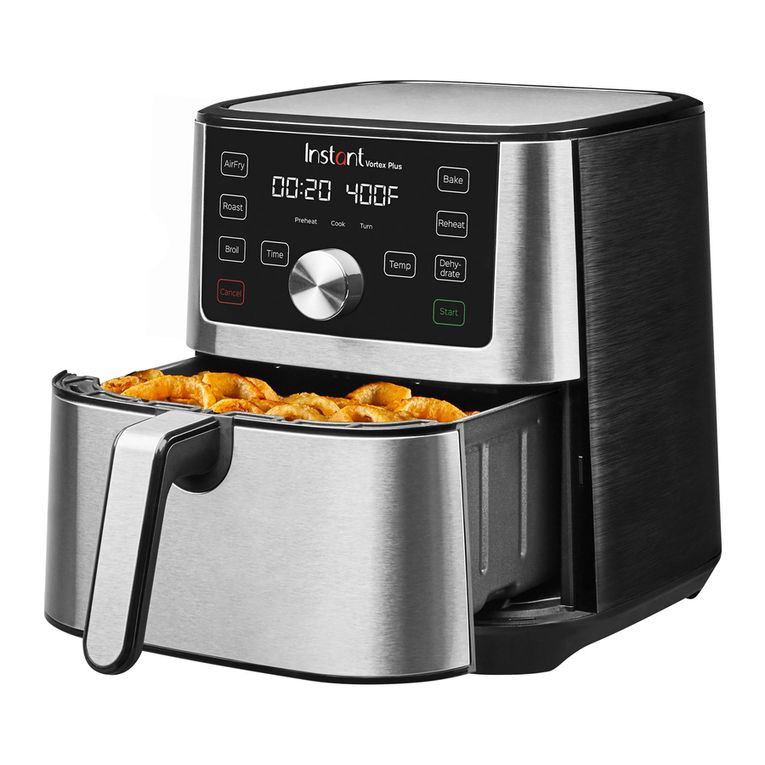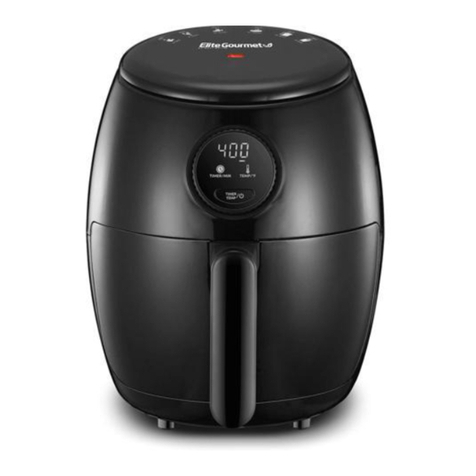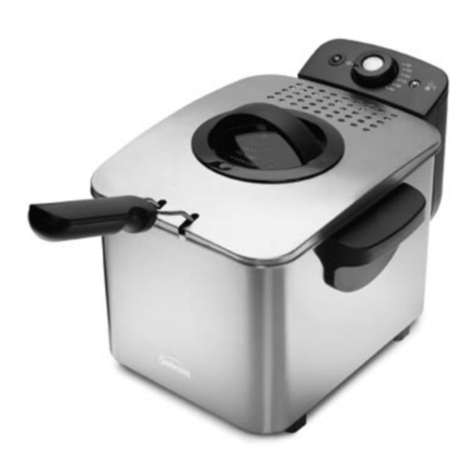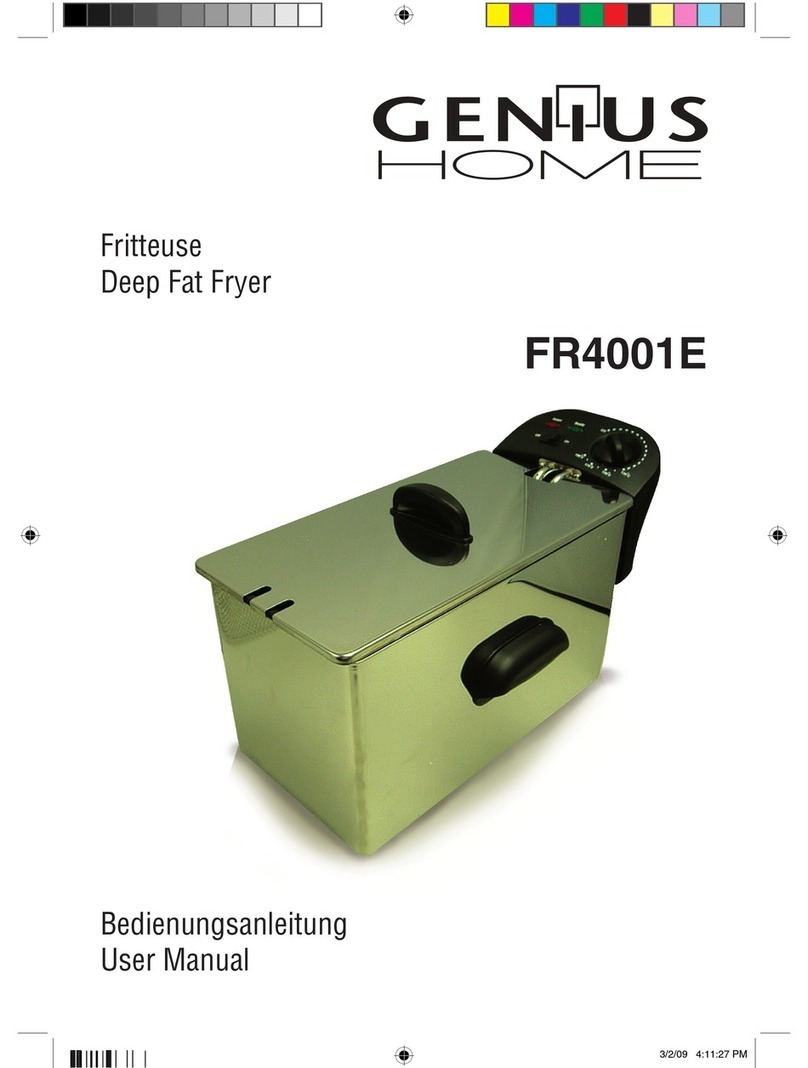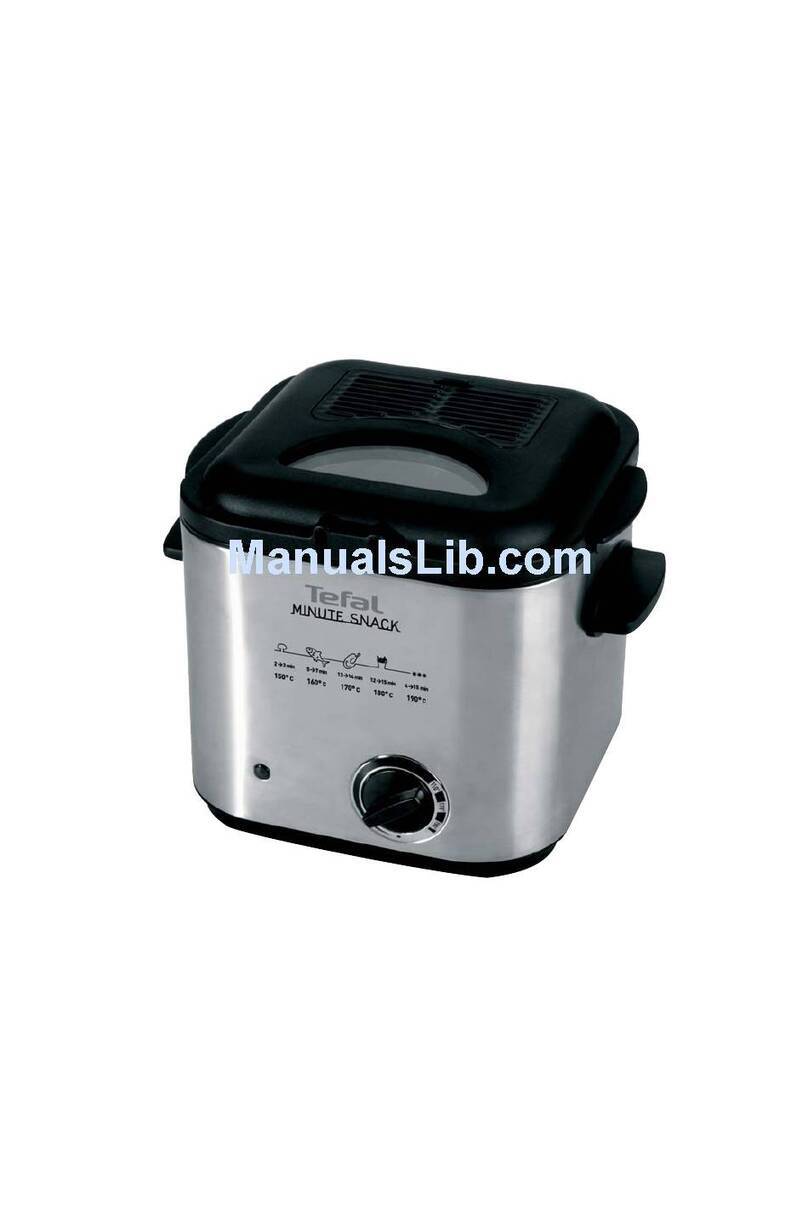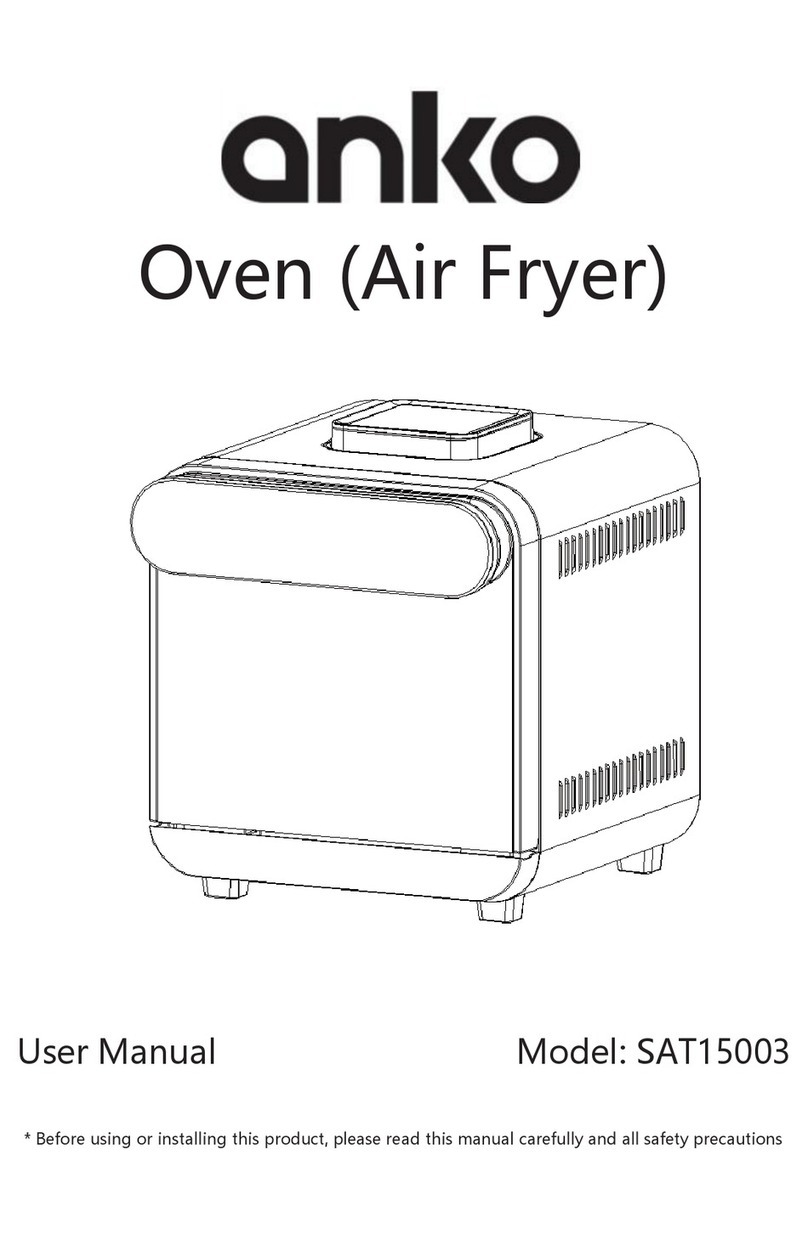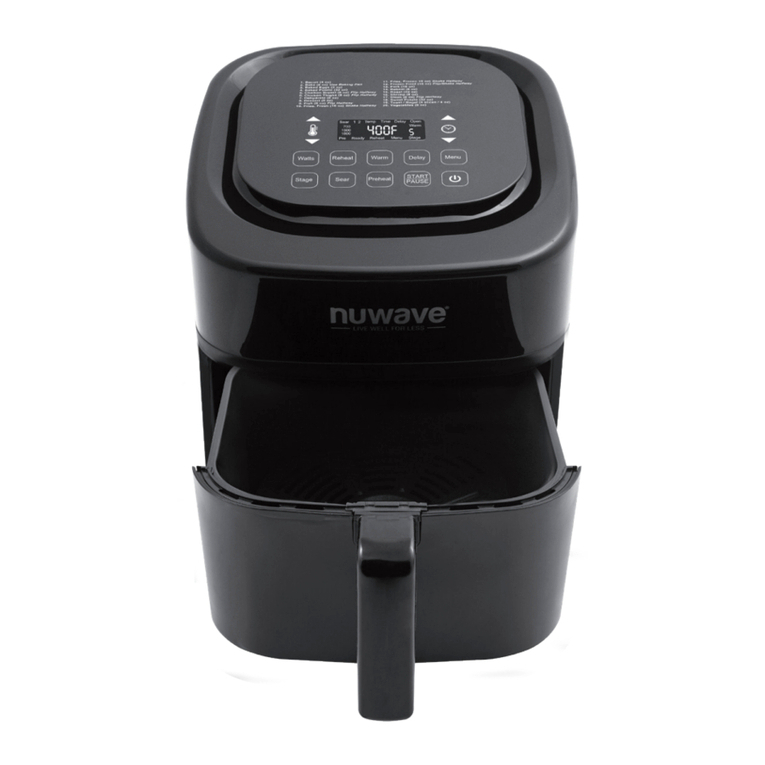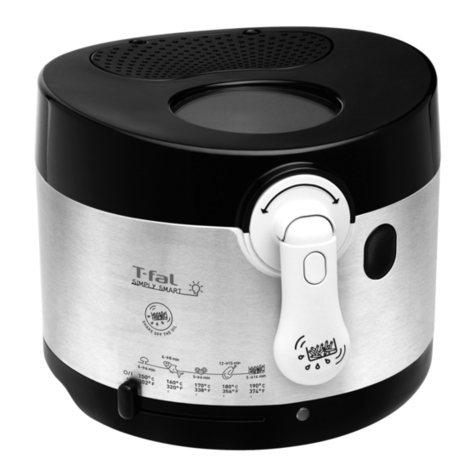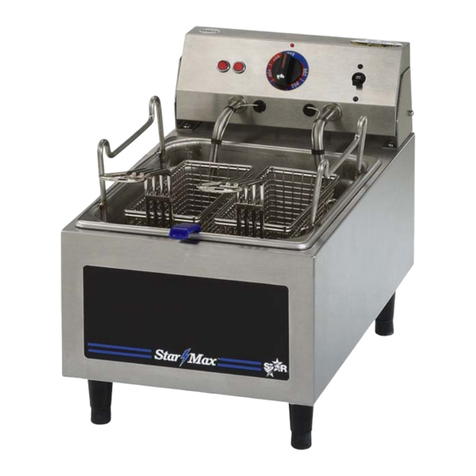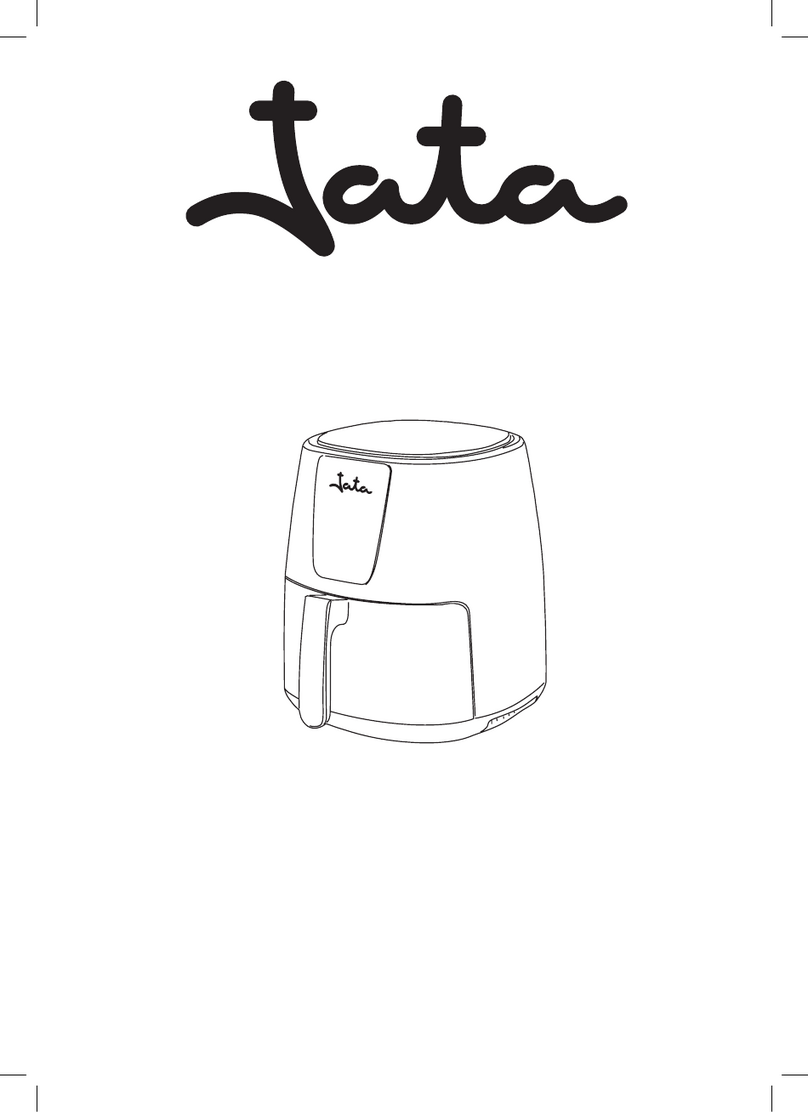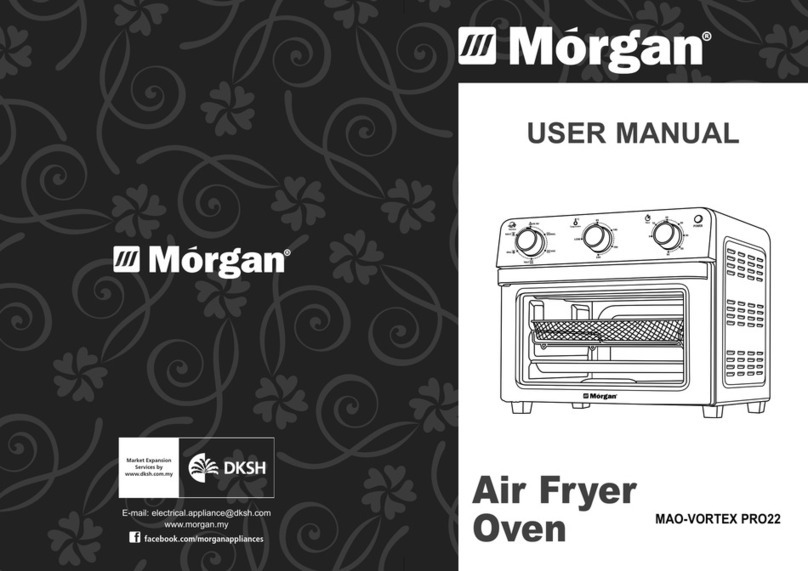
instantpot.com.au | 13
Pressure cooking 101
When pressure cooking, the Duo Crisp goes through 3 stages.
Pre-heating
What you see What you don’t see Tips
The display shows On.
While the multi-cooker pre-heats, it
vapourises liquid to create steam.
Once enough steam has built up, the float
valve pops up and locks the lid in place.
Frozen foods have the longest pre-heating
time. For the fastest results, thaw your
food before cooking it.
The time it takes the Instant Pot to
pressurise depends on the amount
of food and liquid in the inner pot.
More food means a longer pre-
heating time.
Cooking
What you see What you don’t see Tips
The display switches
to the cooking countdown
timer.
When it reaches the required pressure
level, cooking begins.
The multi-cooker automatically maintains the
cooking pressure at High or Low pressure.
A higher pressure means a higher
temperature.
Smart Programme settings (e.g., cooking
time, pressure level, etc.) can be adjusted
at any time during cooking.
Depressurisation
What you see What you don’t see Tips
If Keep Warm is on after
cooking, the timer counts
up from 00:00.
If not, the multi-cooker
returns to standby and
displays End.
Although food has finished cooking, the
multi-cooker is still pressurised and hot.
Reducing the pressure level allows you to
safely remove the lid.
Follow your recipe instructions to
depressurise the multi-cooker.
See Releasing pressure: Venting
methods on the next page for safe
venting techniques.
DANGER
DO NOT attempt to remove the lid while the float valve is up and NEVER
attempt to force the lid open. Contents are under extreme pressure. Float
valve must be down before attempting to remove the lid. Failure to follow these
instructions may result in serious personal injury and/or property damage.
WARNING
Steam ejected from the steam release
valve is hot. DO NOT place hands, face,
or any exposed skin over the steam
release valve when releasing pressure.
DO NOT cover the steam release valve.
NOTICE
Do not use QR when cooking fatty, oily, thick or high-starch foods (e.g., stews,
chilis, pasta and congee) or when cooking foods that expand when cooked (e.g.,
beans and grains).




















